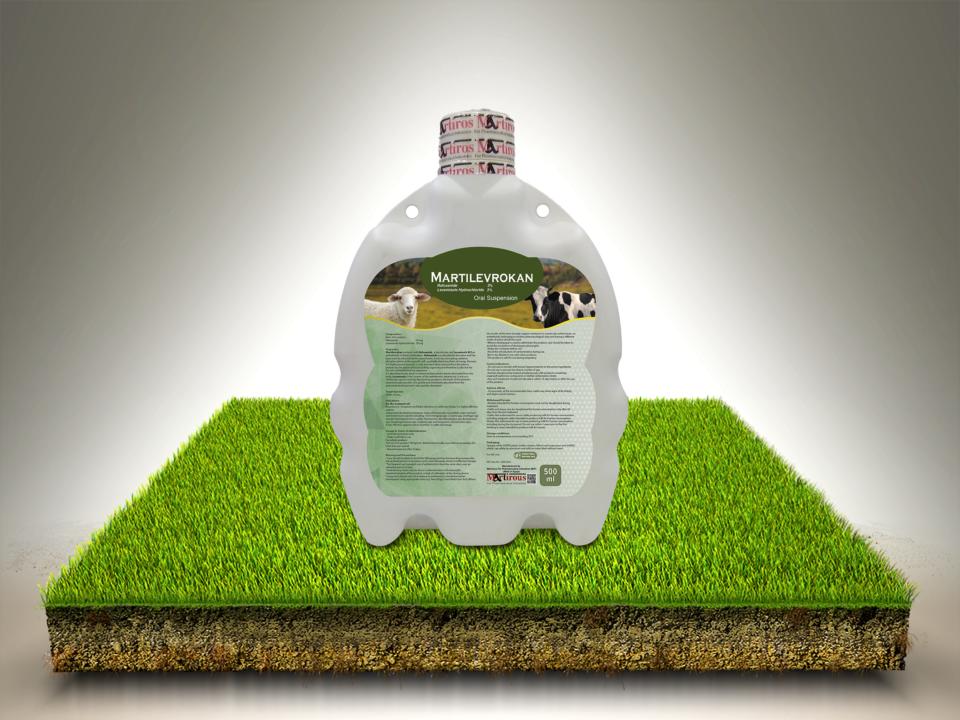
Lincogerm Plus

Neocleer 14%
Diflocinmart
Composition:
Each 1 gm contains:
Difloxacin (as Difloxacin Hydrochloride) 100 mg.
Properties:
Difloxacin is a fluoroquinolone antibactrial mainly used for dogs. It is a concentration-dependent bactericidal agent. It acts by inhibiting bacterial DNA-gyrase (a type-II topoisomerase), thereby preventing DNA supercoiling and DNA synthesis. The net result is disruption of bacterial cell replication. Difloxacin has good activity against many gram-negative and gram-positive bacilli and cocci, including most species and strains of Klebsiella spp., Staphylococcus spp., E. coli, Enterobacter, Campylobacter, Shigella, Proteus, and Pasturella spp.. Some strains of Pseudomonas aeruginosa and Pseudomonas spp. are resistant and most Enterococcus spp. are resistant. Like other fluoroquinolones, difloxacin has weak activity against most anaerobes and is not a good choice when treating known or suspected anaerobic infections.
Indications:
it is used for treatment of:
• Bacterial Urinary Tract Infections caused by: Escherichia coli, Proteus, Klebsiella , Pseudomonas spp., Staphylococcus spp., and Enterococcus spp.
• Canine skin infections are caused by: Staphylococcus pseudintermedius, S. aureus, S. schleiferi, and S. hyicus.
Target Species:
Dogs
Dosage & route of administration:
Route of administration: Orally.
For active ingredient:
5 –10 mg difloxacin /kg.b. wt once daily PO for 2–3 days beyond the cessation of clinical signs to a maximum of 30 days therapy.
For whole product:
0.5 – 1 ml of product /10 kg.b.wt once daily PO for 2–3 days beyond the cessation of clinical signs to a maximum of 30 therapy.
Warnings:
• Concerns about the risk of increasing resistance of human pathogens to fluoroquinolones as well as the ability of infections in animals to resist treatment should be considered by health practitioners when prescribing B these medications.
• There have been warnings by infectious disease experts that widespread use of fuoroquinolones may lead to increased resistance, and transfer of resistance to humans has been suggested for Campylobacter spp. and Salmonella typhimurium.
• This product is only for dogs.
Preautions:
Special precautions for use in animals:
-The manufacturer states that difloxacin should be used with caution in animals with known or suspected CNS disorders (e.g., seizure disorders) as rarely drugs in this class have been associated with CNS stimulation and seizures.
Special precautions to be taken by the person administering the veterinary medicinal product to animals:
Care should be exercised to avoid contact of medication with the eyes or skin while handling solutions
Use during pregnancy, lactation or lay:
– Safety in breeding or pregnant dogs has not been established.
– It is not known whether difloxacin is excreted into milk.
– Because of the risk of producing arthropathies in immature animals, it has been recommended that
significant levels of fluoroquinolones in the milk of nursing animals be avoided, fluoroquinolones can be distributed into milk, sometimes at a higher concentration than in plasma, but it is not known under what conditions significant amounts might be absorbed by nursing animals.
-Mastitis, it has not been shown that fluoroquinolones are effective in treating mastitis, perhaps because
of factors in milk that inhibit activity.
Contra-indication:
• Difloxacin, like other fluoroquinolones can cause arthropathies in immature, growing animals. Because dogs appear to be more sensitive to this effect, the manufacturer states that the drug is contraindicated in immature dogs during the rapid growth phase (between 2–8 months in small and medium-sized breeds and up to 18 months in large and giant breeds).
• The drug should be considered contraindicated in dogs known to be hypersensitive to difloxacin or other drugs in its class(quinolones).
Drug–drug interaction:
• The manufacturer reports that difloxacin was used concurrently in field trials with a variety of drugs including heartworm preventative, thyroid hormones, ectoparasiticides, antiseizure drugs, anesthetics, antihistamines, and topical antibiotic/anti-inflammatory preps without untoward effects.
• However, the following drug interactions have either been reported or are theoretical in humans or animals receiving other oral fluoroquinolones and may be of However, the following drug interactions have either been reported or are theoretical in humans or animals receiving other oral fluoroquinolones and may be of significance in veterinary patients receiving difloxacin:
-ANTACIDS/DAIRY PRODUCTS containing cations (Mg++, Al+++, Ca++): May bind to ciprofloxacin and prevent its absorption; separate doses of these products by at least 2 hours from difloxacin.
– ANTIBIOTICS, OTHER (aminoglycosides, 3rd-generation cephalosporins, penicillins-extended-
spectrum): Synergism may occur, but is not predictable, against some bacteria (particularly
Pseudomonas aeruginosa) with these compounds. Although difloxacin has minimal activity against
anaerobes, in vitro synergy has been reported when first generation fluoroquinolones have been used with clindamycin against strains of Peptostreptococcus, Lactobacillus and Bacteroides fragilis.
– CYCLOSPORINE: Fluoroquinolones may exacerbate the nephrotoxicity and reduce the metabolism of cyclosporine (used systemically).
– GLYBURIDE: Severe hypoglycemia possible.
– IRON, ZINC (oral): Decreased difloxacin absorption; separate doses by at least two hours.
– METHOTREXATE: Increased MTX levels possible with resultant toxicity.
– NITROFURANTOIN :may antagonize the antimicrobial activity of the fluoroquinolones and their concomitant use is not recommended.
– PHENYTOIN: Difloxacin may alter phenytoin levels.
– PROBENECID: Blocks tubular secretion of ciprofloxacin and may also increase the blood level and half-life of difloxacin.
-SUCRALFATE: May inhibit absorption of difloxacin; separate doses of these drugs by at least 2 hours.
– THEOPHYLLINE: Difloxacin may increase theophylline blood levels.
– WARFARIN: Potential for increased warfarin effects.
Side effects:
• While the manufacturer reports that only self-limited gastrointestinal effects (anorexia, vomiting, diarrhea) were reported during clinical studies (at 5 mg/kg dosing) in adult animals.
• Higher doses or additional experience with use of the drug may demonstrate additional adverse effects.
Overdose (symptoms, emergency procedures, antidotes), if necessary:
• Dogs receiving up to 2.5X (25 mg/kg) for 30 days did not demonstrate overly significant adverse effects. Facial erythema/edema, diarrhea, decreased appetite and weight loss were noted.
The frequency of adverse reactions is defined using the following convention:
• very common (more than 1 in 10 animals treated displaying adverse reactions)
• common (more than 1 but less than 10 animals in 100 animals treated)
• uncommon (more than 1 but less than 10 animals in 1,000 animals treated)
• rare (more than 1 but less than 10 animals in 10,000 animals treated)
• very rare (less than 1 animal in 10,000 animals treated, including isolated reports).
Withdrawal periods: necessary:
• In the event of overdose in pigs, a change in the consistency of the faeces (soft faeces and/or diarrhoea) may be observed.
• In chickens treated at several times the recommended dose, enlargement of the caecum and abnormal caecum content was observed.
• In case of accidental overdose, the treatment should be interrupted and restarted at the recommended dose.
Withdrawal Period(s):
-Not applicable.
Storage conditions:
• Keep in a dry, cool place away from the light.
• Keep out of reach of children.
• Store at temperature not exceeding 30°c.
Packagings:
Plastic bottle 100,250,500 and 1000 ml.




